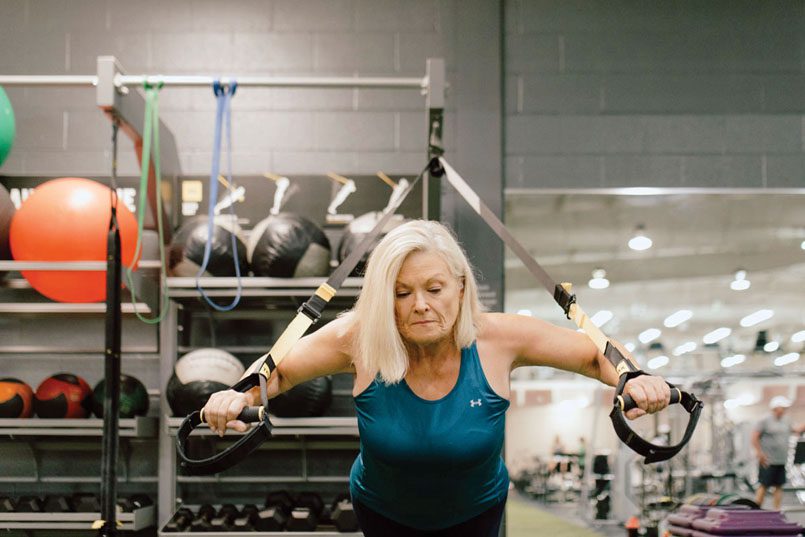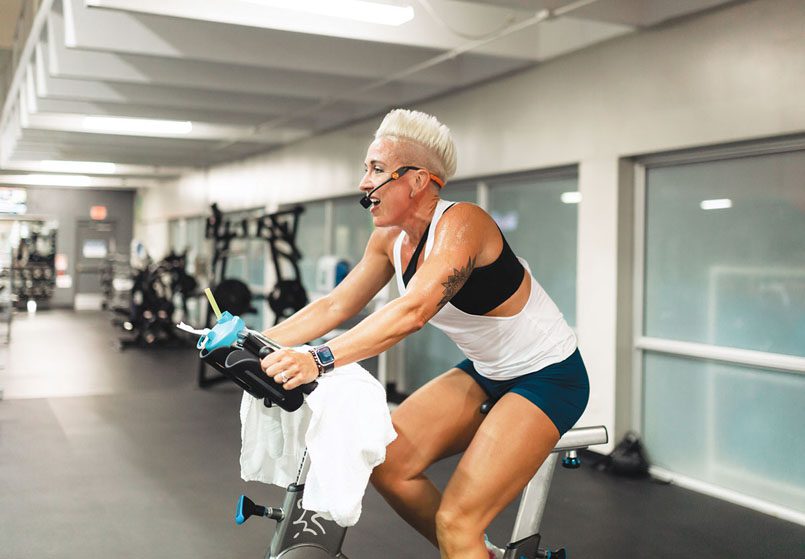31 Jan 2023 It’s never too late
By Amanda Castillo
Concerning exercise and living a healthier lifestyle, you truly have two choices in life. You can stay where you are or move forward.
My mantra is, “You can do hard things.” I motivate my clients and class participants, regardless of age, with those words. Age is not a barrier to living your best life or feeling good about yourself. Change is hard, no doubt, but we must move forward.
The time is now to challenge yourself to live a healthier, happier life.

Want to look and feel better as you age?
Move your body. Keep it simple, even if it is walking for 10 minutes here and there. It all adds up and will make a difference.
Focus on being strong. Lift weights even if you do not care about building muscle, but you should! Lifting weights helps prevent sarcopenia (age-related muscle loss), makes bones stronger, improves joint health and reduces your risk of heart disease and diabetes. Lifting weights is genuinely the Fountain of Youth.
Get enough sleep. This is hard for many individuals, but we must prioritize our sleep.
Do not take your health for granted. Be proactive with regular checkups. Establishing a relationship with a primary care provider is essential to recognize signs of disease or illness before they cause significant issues. Your doctor can perform routine lab work to set a baseline so that you can be proactive about your health rather than reactive.
To make a lasting behavioral change, most individuals progress through pre-contemplation, contemplation, preparation, action and maintenance stages.
In pre-contemplation, individuals are not genuinely accepting of the problem or the need for immediate change, which means they often procrastinate change. Individuals in this stage have heard from their doctor or peers that they “should” change. For example, the individual knows they should lose weight and exercise, but there is no urgency or motivation.
In contemplation, we actively consider making a change but still believe that barriers or challenges outweigh the benefits of the change. For example, knowing you should exercise, but you make the reasoning that you do not have the time. If it is a priority, you will make the time – or continue to make excuses.

In the preparation stage, there have likely been several unsuccessful efforts in the past. For example, the individual joined a gym but did not go. This is where we must overcome obstacles. We need to either remove a barrier like pressing snooze or add a trigger such as packing a gym bag ahead of time to head straight to the gym after work.
The action phase is when we are committed to the change but need to remember why we began the process to change in the first place. This will help us manage a potential relapse by slipping into old behaviors. However, do not have an all-or-nothing mentality. Do not give up because you get off track. Acknowledge the relapse and learn from the experience!
This leads us to the maintenance stage. We could have sustained the positive behavior change of going to the gym for more than six months. Now what? We are typically internally motivated and can rely on habits more than willpower. Routine is important for consistency, and consistency brings change. Is there potential for relapse? Absolutely, but we can get back on track!
When we are on a challenging section of an indoor cycling ride or my client is hitting a new personal best for the leg press — that is the moment when you again have two choices. You can stay where you are or move forward. I will repeat it and encourage you to repeat it as often as needed — you can do hard things.
Whatever intentions or goals you set for 2023, I will be over here cheering you on to move more and live better!








